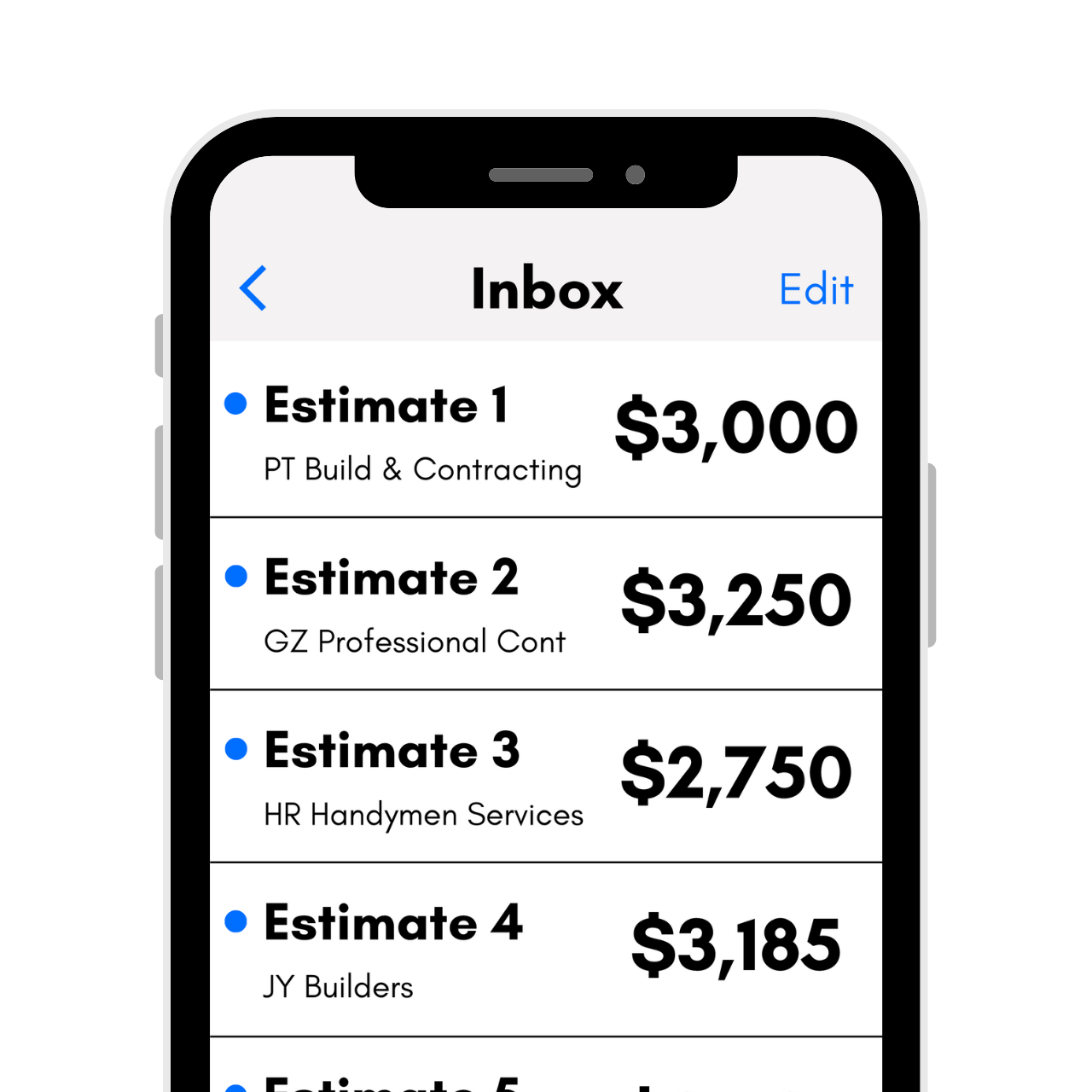Fence Calculator
Estimate Material and Post Centers
To estimate the fence posts, rails, pickets, and hardware you need, enter your fence length, number of rails, and picket dimensions. You’ll also get a cost estimate for pressure-treated wood, cedar, and redwood.
See below for information on various types of fences to help you and to learn how to calculate wood fence materials.
Results: Fence Components Needed
| 8' 4x4 posts: | |
| 8' 2x4 rails: | |
| pickets: | |
| post concrete: | |
| 1-1/2" screws: | |
| 3-1/2" screws: |
Estimated Material Cost:
| treated: | $ |
| cedar: | $ |
| redwood: | $ |
On this page:
- Fence Calculator
- How to Estimate Privacy Fence Materials
- How Many Fence Posts Do You Need?
- How Many Fence Rails Do You Need?
- How Many Pickets Do You Need?
- Tips For Estimating Fence Lumber
- How to Estimate Fence Price
- Types of Lumber Needed For a Wood Privacy Fence
- Estimate Solid Board Privacy Fence Material
- Estimate Shadowbox Fence Material
- Estimate Stockade Fence Material
- Estimate Picket Fence Material
- Estimate Rail Fence Material
- Frequently Asked Questions
How to Estimate Privacy Fence Materials
Fences are a great way to add privacy, security, and decor to your property. They can be constructed from a variety of materials, including wood, metal, vinyl, and stone.
Wood is one of the most common fence materials. Wood fences come in many styles, and can be built from several types of wood, including pressure-treated lumber, and softwoods like cedar or redwood.
This calculator will help you determine the amount of materials you’ll need to build a wood fence without relying on readymade panels.
Interested in installing a vinyl fence? Our vinyl fence calculator can help calculate materials.
When building a wood fence, you need to determine the amount of lumber and hardware you’ll need before you begin. For most wood fences, you need posts, rails, pickets or boards, and nails or screws.
You may also need gate hardware, post caps, stain or paint, lighting, or other materials depending on the style you choose.
Some concrete and the tools to mix and pour it will also be needed to set the posts. Use our post concrete calculator to estimate the amount of concrete you need to set your fence posts.
The amount of material you need to build your fence depends on the style. Wood fences come in many types, including stockade, dog-ear, and shadowbox.
Some styles, such as a board-on-board fence, offer superior privacy but require more material. Others, like a side-by-side fence, use less material and can be oriented vertically or horizontally.
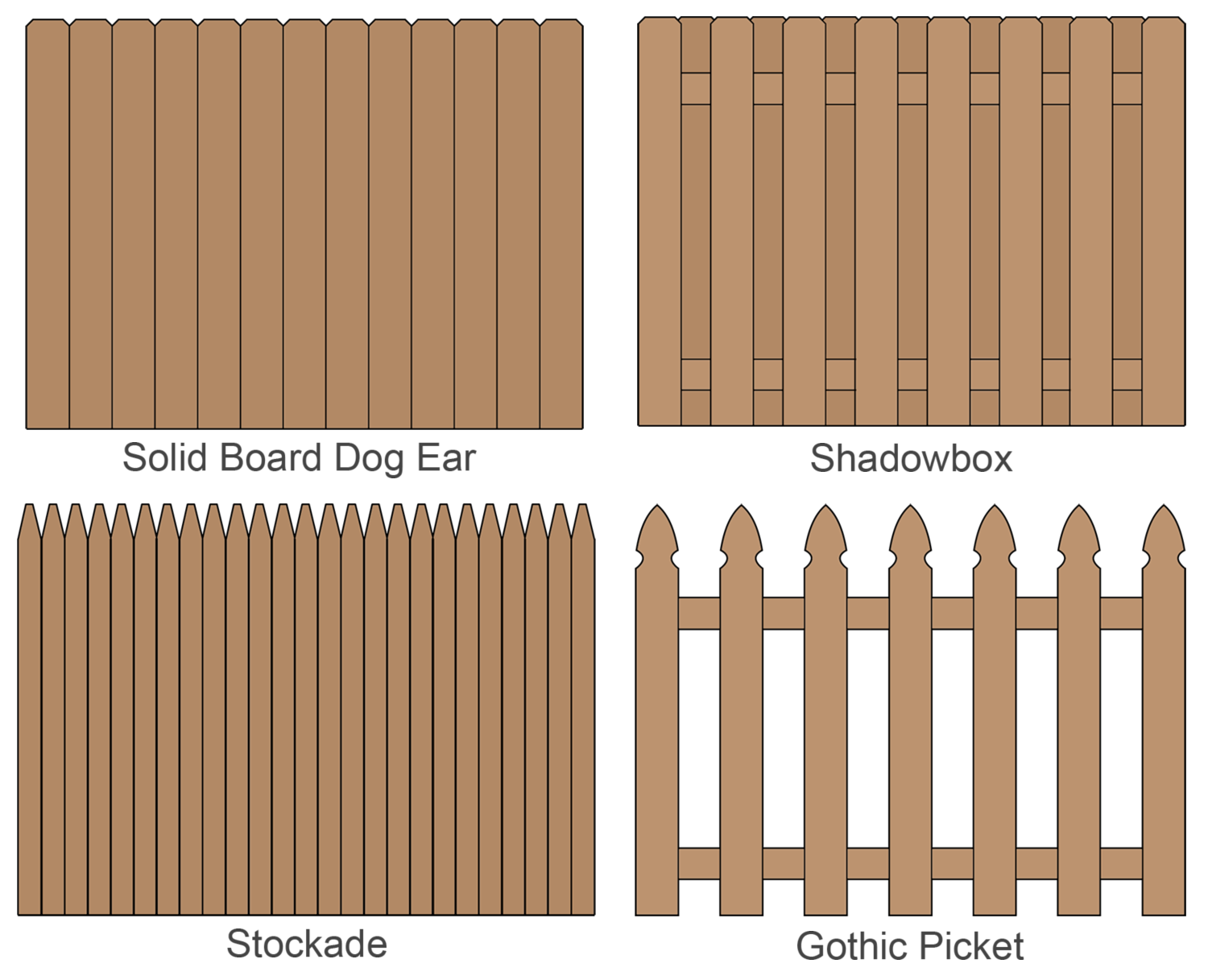
Once you’ve chosen a style, you can enter your total length and rail and picket or board specs into the wood fence calculator above to get an estimated bill of materials.
The calculator will estimate how much lumber you need to construct your fence, including the number of posts, rails, pickets, concrete, and nails/screws.
Continue reading to learn how to make the calculations yourself.
How Many Fence Posts Do You Need?
The first step in figuring out how much wood is needed to build a fence is to measure the length of the total fence run in feet. Given the total length, you can estimate the number of posts you need.
Posts for wood fences are typically 8 feet apart; if you are using other materials, keep in mind that posts can be placed up to 25′ apart. To calculate the number of posts for a wood fence, divide the length by 8′ and round up to get the number of sections. Then, add 1 to account for the last post.
For example, let’s find how many posts are needed for a fence with a planned length of 100 feet.
(length in ft. ÷ 8′) + 1 = posts
(100′ ÷ 8′) + 1 = posts
(12.5) + 1 = 13.5 posts
Round up to get 14 posts needed.
How Many Fence Rails Do You Need?
Rails are the horizontal boards that run between the posts that the fence boards or pickets are affixed to. To calculate rails, decide the number of rails you want.
This will vary by the style and height of the fence, but there should be at least two. Privacy fences are generally at least 6′ tall, but may go as high as 12′. The general rule of thumb for rails is to have one rail for every 24″ of height in your fence.
For a 6′ high fence, this means 3 rails. For a 12′ high fence, this means 6 rails. If you are building a shorter fence, you may only need 2 rails.
Multiply the number of sections by the number of rails per section to find the total rails needed. The number of sections is equal to the number of posts in the previous step, minus 1.
For example, let’s find how many rails will be needed for a 100′ fence with 14 posts that is 6′ high. There will be three rails per section.
14 posts – 1 = 13 sections
13 sections × 3 rails = 39 total rails
How Many Pickets Do You Need?
Depending on the style of fence you are building, you may need pickets or boards to complete the fence. Pickets or boards can be spaced closer together to create a privacy fence, or spaced more widely for decorative fences.
A fence board is completely flat and typically 5-½” wide, while a picket is often much thinner at around 2-½” wide. Stockade fences are a good example of a fence using pickets, while a board-on-board fence will usually use flat boards.
Both are calculated the same way: you need the width of the picket or board and any spacing between them.
For example, stockade and dog ear fences have no spacing between the pickets or boards. But a picket-style, decorative fence will space the pickets a few inches apart from one another.
To calculate the number of pickets or boards, add the width of the board and the space between them. For some fences, this will only be the width of the board.
Change the length of your fence to inches to match the picket/board measurements. Divide the fence length by the total picket/board width to get the number of pickets needed.
For example, let’s find the number of pickets needed for a 100′ fence using a 5-½” picket with a 2″ spacing.
5.5″ picket width + 2″ spacing = 7.5″ combined width
100′ length × 12″ = 1200″ length
1200″ length ÷ 7.5″ combined width = 160 pickets
Tips For Estimating Fence Lumber
We recommend ordering 10% extra lumber to account for cutoffs and waste. Posts are commonly constructed using 4×4 dimensional lumber, and rails are often 2×4.
Plan on ordering lumber to build gates as needed, including additional posts and hardware. Gate posts are usually 4×4 or 6×6 dimensional lumber.
How to Estimate Fence Price
The average fence costs $2000 to $8000 to install, depending on material, style, and length. Wood is often chosen for its durability, aesthetics, and affordability.
To determine a solid price estimate, decide on the fence style and type of wood you want and accurately estimate the amount of material needed. Common wood choices are pressure-treated wood, cedar, or redwood, and they vary in price considerably.
Use the calculator above to estimate quantities and costs for all three materials at once.
A home center or lumberyard can provide you with your local material costs. Ask for prices on 4×4s, 2×4s, and pickets or boards in each wood you are considering. Also, don’t forget to check the price of exterior screws and post-setting concrete.
Multiply the prices by the amount of material needed, then add them together to get a total estimated cost. We also suggest finding a local contractor to get a professional estimate for your project to find out precisely what it will cost.
Types of Lumber Needed For a Wood Privacy Fence
The types of lumber needed for a wood privacy fence will vary by type and style. Board-on-board fences typically use more lumber, while side-by-side fences use less. Use the following measurements for quick estimations of lumber amounts.
Estimate Solid Board Privacy Fence Material
A solid board privacy fence consists of at least 3 rails connected to posts with attached pickets or boards with no gaps between them. Boards are usually 5-½” wide (thinner pickets are called “stockade” style; see below).
All the boards are installed on one side of the rails. So, you can see the rails on one side of the fence but not the other. The rail side is usually installed facing in. The other side is smooth and is usually public facing.
The exception is the framed style, where the rails are located at the very top and bottom to “frame” the boards. These rails are usually public facing. See popular solid board styles.
Use the following values for the form above to estimate:
- Length: fence length
- Rails per Section: 3 or more
- Picket Spacing: 0
- Picket Width: 5.5″
See popular solid board styles.
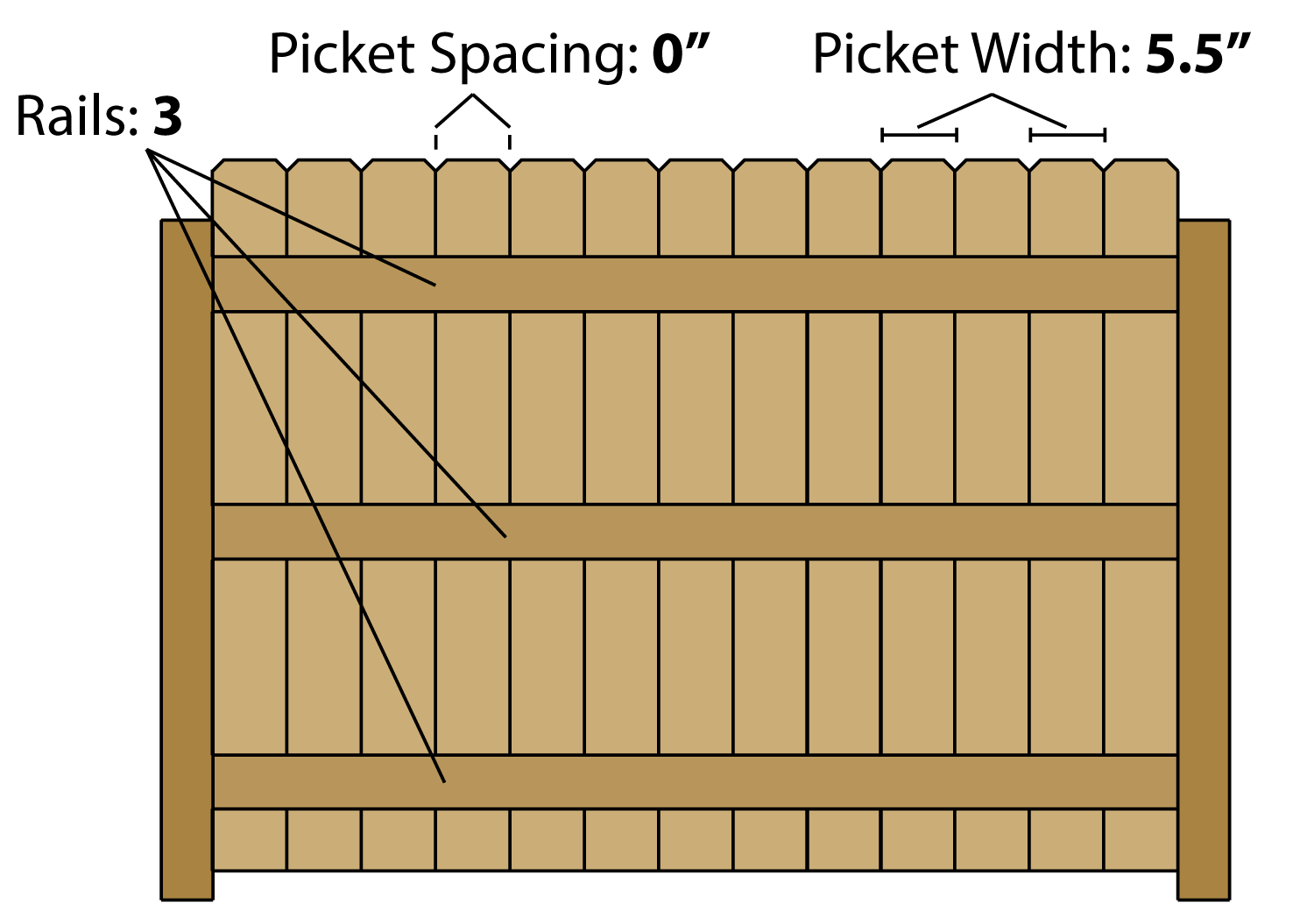
Estimate Shadowbox Fence Material
A shadowbox fence is similar to the solid-board style, except the pickets are installed on both sides of the rails with a gap between them. The pickets from one side are spaced so that they cover the space between the pickets from the other side. This creates a solid visual barrier.
Shadowbox fences are a subtype of the board-on-board style of fencing, and need more lumber to complete. Because pickets are mounted on both sides, the shadowbox style looks the same on each side.
Use the following values for the form above to estimate:
- Length: fence length
- Rails per Section: 3 or more
- Picket Spacing: -1″
- Picket Width: 5.5″
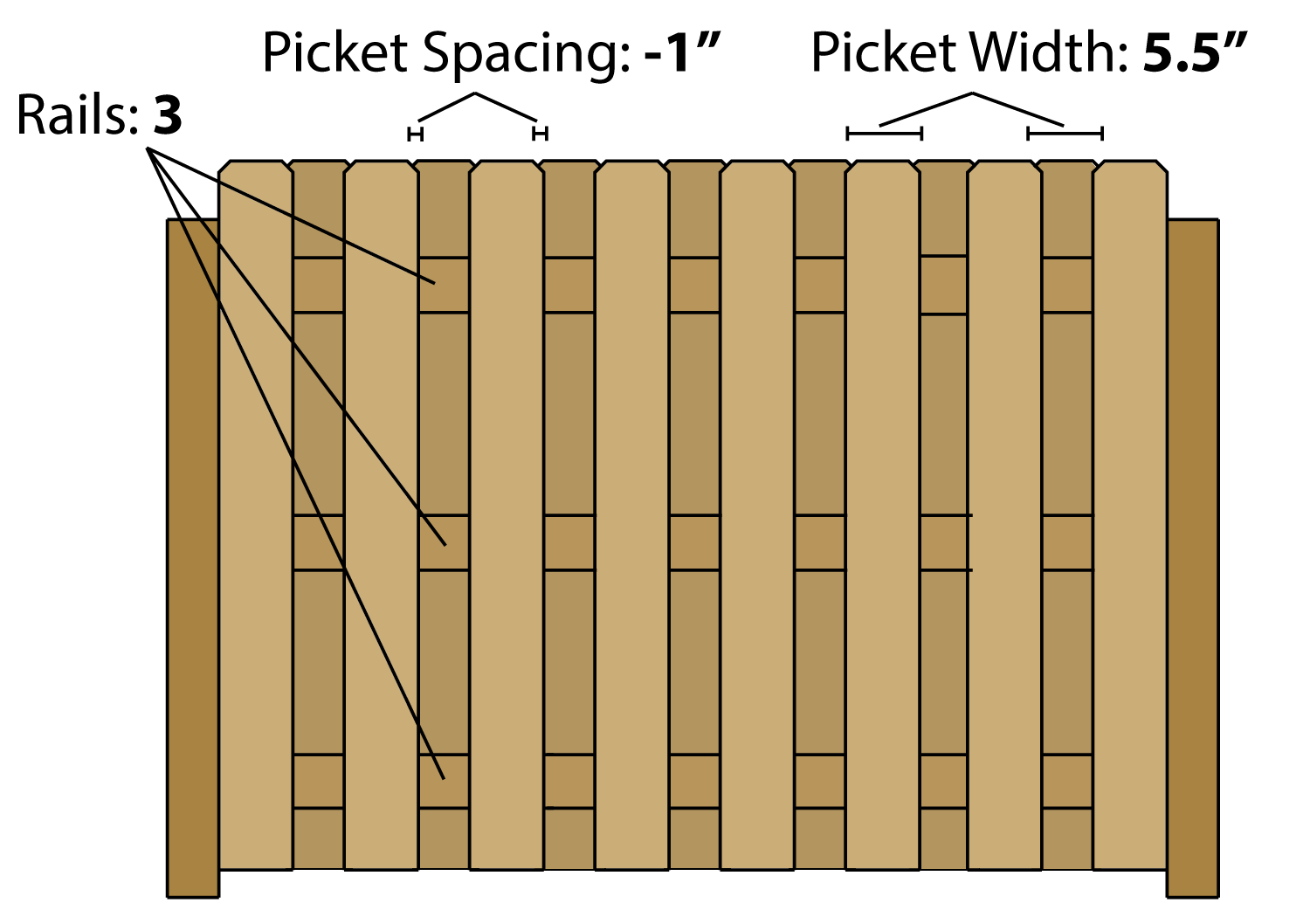
Estimate Stockade Fence Material
A stockade style fence is a style of side-by-side solid privacy fencing, using pickets that are 2-½” to 3-½” wide to achieve the stockade look. Like all solid-board fences, you will want to consider on which side you want the railings to show.
Use the following values for the form above to estimate:
- Length: fence length
- Rails per Section: 2 or 3
- Picket Spacing: 0
- Picket Width: 2.5″
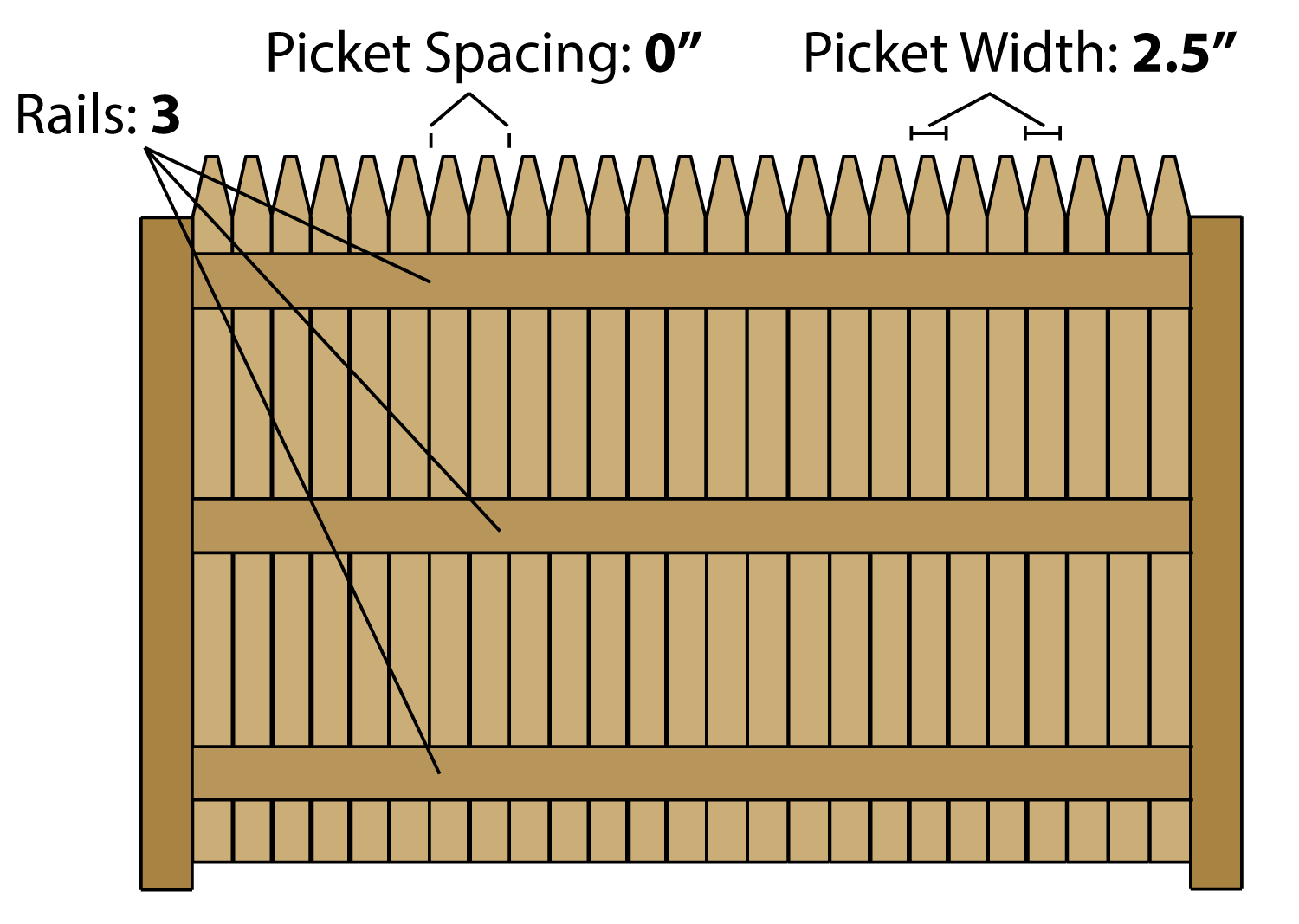
Estimate Picket Fence Material
A spaced picket fence consists of posts with 2 rails and 2-½”-wide pickets that are spaced evenly with a gap. The gap is usually the width of a picket, though this can vary. All pickets are installed on the same side of the rails, typically on the public-facing side. There are many patterns for picket styles and spacing. See popular picket styles.
Use the following values for the form above to estimate:
- Length: fence length
- Rails per Section: 2 or 3
- Picket Spacing: 3.5″
- Picket Width: 3.5″
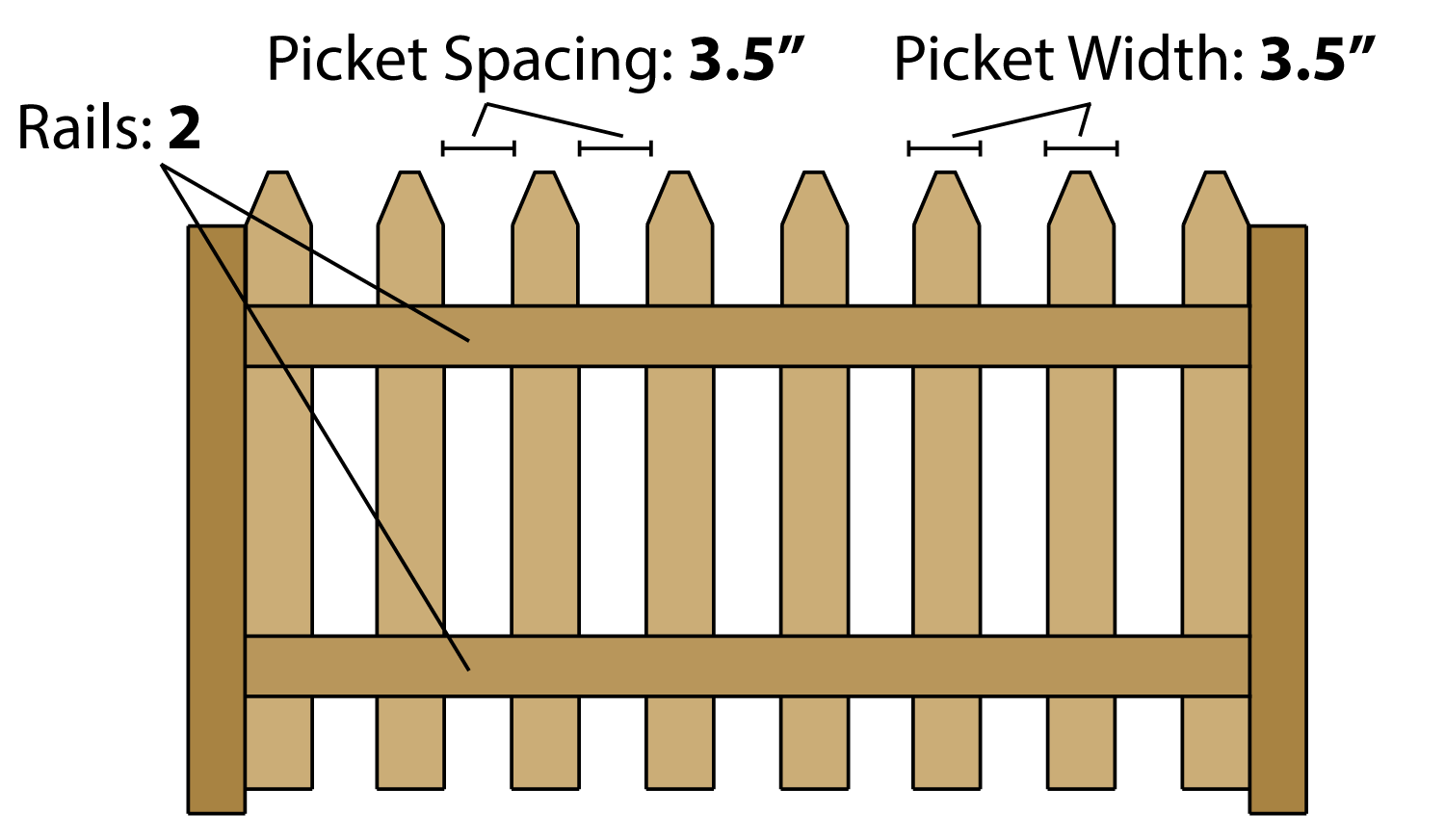
Estimate Rail Fence Material
Rail fences are wood fences that are used mostly for boundaries or livestock. They do not provide any privacy or security for pets or children.
They consist of horizontal rails between posts, with no vertical boards or pickets. The number of rails will increase as the height of the fence increases, but you can also add additional rails if you want to make the fence more secure for livestock.
There are two general types: a standard rail fence uses milled lumber between the posts. The lumber is usually nailed into place, but if using round milled rails, they may be inserted into the posts using pegs.
A split-rail fence uses non-milled lumber between the posts, and has a more rustic appearance. The lumber may be irregular, or can be made up of split tree branches.
Because there are no boards or pickets, these fences are usually cheaper to install.
Use the following values for the form above to estimate:
- Length: fence length
- Rails per Section: 3
- Picket Spacing (inches): 0
- Picket Width (inches): 0
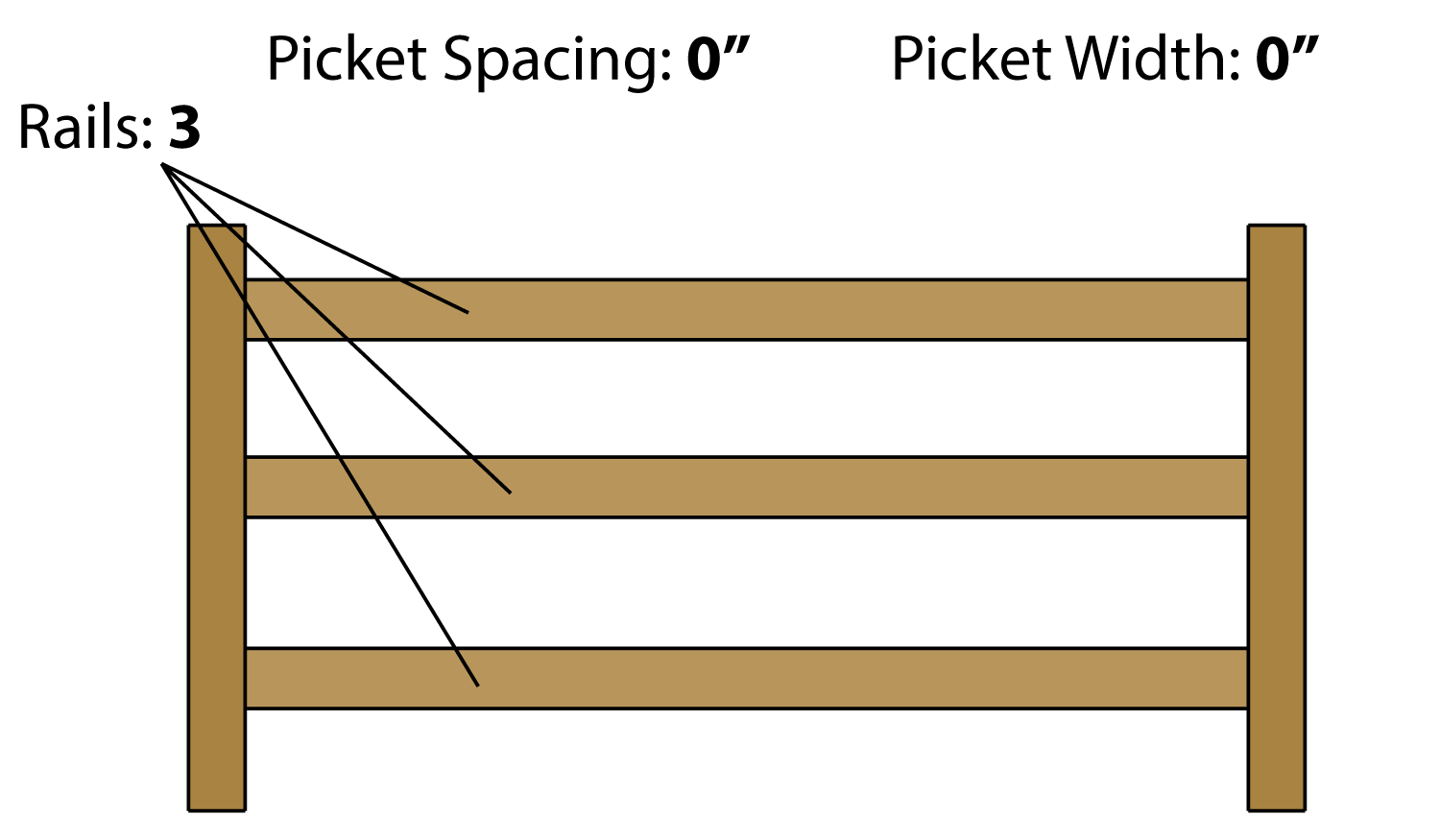
Frequently Asked Questions
How far apart should fence posts be?
For most wood, vinyl, and metal fences, 8 feet is the standard spacing, but depending on the fence type, posts can range from between 8 and 25 feet apart.
How do you calculate fence post spacing?
For most fences, 8 feet is the standard spacing, although, for some chainlink and wire fences, the spacing can be much longer. Divide the total length of fencing you need by the space between the posts – 8′ being average – to get the number of posts needed.
How long should fence posts be?
The typical fence post should be set at least ⅓ the height of the fence in the ground. This means that if your fence is 6′ high, you’ll need 8′ long posts so that they can be set 2′ in the ground.
What is the standard fence height?
For a privacy fence, the standard height is 6′, but may go as high as 12′ in certain circumstances. For decorative fences and pet fences, 4′ is generally standard.
What is a linear foot of fence?
A linear foot is a horizontal measurement of the fence, or the total length of the fence, measured in feet. Learn more about how to calculate linear feet.
How do you figure square footage for a fence?
The square footage of a fence is equal to the total length in linear feet times the height in feet.
Note that most fences are sold and installed by the linear foot, or the length of the fence in feet. However, when estimating paint, stain, or other finishing, you may need to measure the area of the fence in square feet.



